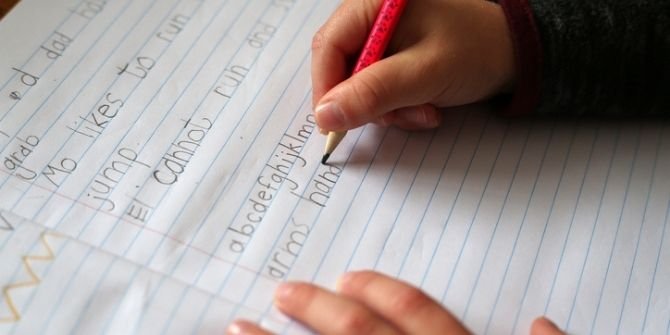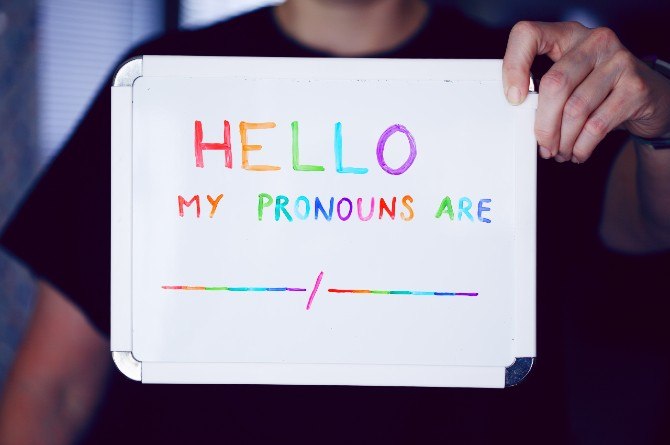5 Ways To Make English Grammar Easier To Learn For Kids

Languages get more interesting the more you understand and learn about it. And for that, you need to learn grammar. But it’s not the most likeable subject when it comes to children.
You see, any language can be difficult when you don’t understand how grammar works. It’s essentially what helps you to communicate better.
Nouns, verbs, adjectives, adverbs, pronouns, all are essentially the science behind the language and bring coherence to what you want to say.
To be honest, there’s something oddly satisfying about a well-constructed sentence. You know when all the words just come together to tell a story, joke, or change minds. It’s just a different kind of therapy.
For that to happen, your foundation needs to be strong. Grammar is that basic principle upon which you build any language. The earlier you start teaching it to kids, the better it will be for them to organise sentences in the right way.
It will give children better written and spoken skills, while also encouraging them to have a better vocabulary.
And so, here are seven ways you can make grammar for kids simpler and more fun at home.
1. Teaching pronouns

He, her, they, them, and it, are examples of pronouns. Instead of using the boring way to teach pronouns that can be confusing on a beginner’s level, you can make this process a lot more fun.
One of the fun ways to teach pronouns is in the form of a story.
- Fairy tales are a great way to teach kids about grammar.
- Try and use a story that has lots of characters that bring up several pronouns for the kids to spot.
- Turn this into a game and keep score every time your child gets a pronoun right.
- Reward them with a cookie or something extremely small in order to encourage them at the end of the story.
- Every time you play this game, the goal should be to score better than the previous story.
2. Teaching conjunctions

Conjunctions are words that connect two sentences together. There are seven basic coordinating conjunctions that include for, and, nor, but, or, yet, and so. You can see why this can be confusing to identify for kids.
Instead, make this into a fun activity by turning it into a ‘rotate the wheel’ game with the different conjunctions written on it.
- You read out or write a sentence on the board that’s missing conjunctions.
- The child then needs to rotate the wheel and select the conjunction that they think fits well in the blank space.
- If the sentence is “I will finish playing now ____ complete my homework later.” The child needs to rotate the wheel to select “and” or “then” (depending on the grammar level you are teaching).
- Keep score and see the excitement rise with every round.
- Add more complex sentences once the child gets the hang of it.
3. Teaching verbs
Verbs are words that describe an action. So, words like jump, fly, run, exist, guess, are all examples of verbs because they describe an action that’s being carried out.
Teaching verbs to kids is extremely fun because you can transform them into a complete physical activity. And a great way to do it is by playing a game of “Simon Says!”
- Think of a few verbs or action words that children can follow.
- You can then tell them “Simon says jump,” or, “Simon says rollover.”
- The aspect of conducting the action while learning about verbs will reinforce the concept in the child’s mind.
- Not just grammar for kids but this helps them understand other activities too in a better way.
4. Teaching adjectives

Adjectives are words that describe a noun or a pronoun. Words like “old” man, “cheerful” teenager, “green” car are all examples of adjectives.
They add more detail to the individual or object and is an extremely important communication skill.
One of the best ways to encourage and teach children to learn and use adjectives is by playing “Show and Tell.”
- Tell the child to bring a toy, pet, fruit, or household item of their choice.
- The child then needs to describe what they like about that particular item using as many adjectives as possible.
- You need to note down all the adjectives they used for each of the objects.
- Kids can also talk about their friends, siblings or other family members and use different adjectives for them.
5. Teaching adverbs
An adverb modifies a verb or a complete sentence to describe an event. So, in a sentence like “Usain ran badly in the race,” the word “badly” is modified from bad and describes how the runner fared in the race.
In the same way, the sentence, “That building is extremely tall” has the word “extremely” that further describes what makes the building different.
This can be a tricky lot and does need some practice to get it right.
Once your kids understand what are adverbs, you can try fun ways to emphasise their usage in a sentence. And the best way to do it is to use them in sentences that kids will use and say on a daily basis.
- Ask children to think of a fun activity that they like to do. For instance, playing video games, sports, art and craft, and more.
- Then ask kids to think of an adverb that further describes that activity to another person.
- You can start with an example like, “I easily exercise at least once daily.” Here the words easily and daily are the adverbs.
- Now, ask kids to make their own sentences using different adverbs. They can write one sentence per activity.
- Ask the kids to recite what they’ve written. You can always correct them if they go wrong.
What You Should Remember When Teaching Grammar To Kids

1. Use visual cues
Add charts, colours, and arrows as much as possible to your teaching process. The more visual cues you use to emphasise different aspects of grammar, the faster they will be able to pick on it.
2. Enforce the right sentence construction
Kids need to learn about creating the written order for words to comprehend what they want to say.
You can also conduct this in a fun activity by writing the words of a sentence on different pieces of paper and then ask the kids to bring it together to make a sentence.
3. Break it down
Grammar for kids isn’t complicated but it can be confusing. That’s why you need to break it down into simpler terms.
For instance, teaching about companion friends, let the kids learn about them as “little friends” that accompany a larger word.
So adding a, an, the, before and after a word would be the little friends in any sentence. Similarly, adding an adverb or adjective is necessary to describe that object more effectively.
4. Recognising patterns
Grammar is all about learning a pattern of writing or speaking words in a particular order. It’s all about learning that pattern and that will only come from reading as often as possible.
Let your child read books as often as possible. But also encourage them to read billboards, store names, and other literary work in and around them that further enforces the language.
5. Synonyms and antonyms are important
Once you’ve managed to get the basics of grammar right, your next step needs to be expanding your child’s vocabulary. So don’t limit them to just one word to describe something.
Explain the concept of synonyms and antonyms that encourage them to find different words to describe the same things.
A wider vocabulary will only help them to expand their mental horizon when it comes to languages and turn them into better writers.
This article has been republished with permission from theAsianparent Singapore.


